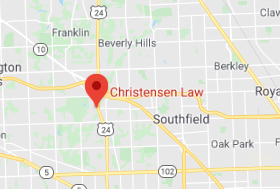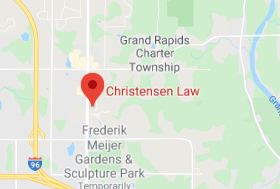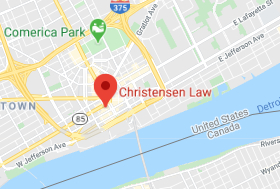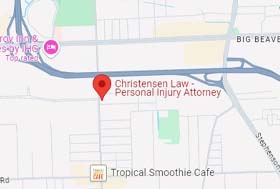
Comparative fault, sometimes called comparative negligence, is a method of calculating damages in personal injury cases. Every state has different comparative fault laws, so you benefit from understanding comparative fault in motorcycle crashes, including types of comparative fault, damages you can claim, and how you can prove fault following a motorcycle collision. A motorcycle accident lawyer can help answer your questions about these topics and let you know how they apply to your case.
Types of Comparative Fault
Comparative fault typically determines the amount of fault a person carries for an accident based on a percentage. Comparative fault laws typically fall under the following three categories.
Modified Comparative Fault
Modified comparative fault laws do not allow the injured party to collect damages if they are more than half at fault for the accident. Some states have a threshold of 50% or greater, while others set the threshold at 51%. Michigan, for example, has a 50% rule outlined in Mich. Comp. Laws Ann. § 600.2959.
Pure Comparative Fault
Pure comparative fault laws allow all the involved party to collect damages based on the other party’s perceived fault. So, if your motorcycle accident was 99% the other person’s fault, you can collect damages for 99% of your losses, and they could still collect damages for the 1% fault that is not theirs.
Contributory Negligence
Contributory negligence laws prohibit the injured party from seeking damages if they are at all responsible for the accident. This rule applies regardless of the amount of fault the injured party holds.
To ensure the best chance for compensation, you should speak with a motorcycle accident attorney familiar with comparative negligence laws in your state.
How Comparative Fault Laws Affect Motorcycle Accident Claims
When you suffer injuries in a motorcycle collision, you have a legal right to seek compensation for your losses. However, the damages you can pursue differ between states. Comparative fault laws can greatly affect the types and amount of damages you can claim.
Damages you could pursue following a motorcycle accident include economic and non-economic losses.
Economic Losses
Motorcycle accidents can lead to serious economic losses, including medical expenses, lost income, and reduced income potential. You can claim financial compensation through a personal injury lawsuit for our medical bills for past and future medical treatments, such as surgical intervention, critical care, physical therapy, and rehabilitation.
Lost income may include lost hours due to medical appointments and hospital stays. If your injuries cased disability or long-term impairment, you could also recover lost future income or reimbursement for education or training in a new career. Economic damages for disabling motorcycle injuries could also include assistive services, like domestic assistance and in-home nursing care.
Comparative fault laws may allow you to seek damages for these losses based on the appropriate fault percentage. During your trial, the judge will determine the extent to which you may have contributed to the accident. They will then award damages according to their calculations.
Non-Economic Losses
Motorcycle crashes can also cause non-economic losses such as pain and suffering and mental anguish. Some states allow you to include non-economic damages in claims governed by comparative negligence laws. Other states, like Michigan, do not allow the injured person to pursue non-economic damages if they carry more than half the total fault.
A skilled Michigan motorcycle accident lawyer can help you understand your state’s comparative fault laws and how they may affect your case. Comparative fault laws can significantly reduce the amount you can recover, so it is best to understand applicable state laws before you begin.
Establishing Liability in a Motorcycle Accident Case
Establishing liability is a major part of any motorcycle accident claim, but it is especially important when seeking compensation in a comparative fault state. Liability determination for comparative negligence means establishing the extent to which you and the other party shared fault. Your goal will be to show that the other party carried most or all the responsibility for your motorcycle accident.
Four Elements of Negligence
To prove negligence in a motorcycle accident case, a Michigan personal injury lawyer must typically establish the following four elements of negligence:
- Duty of Care: Lawyers must show that the other party had a duty to avoid causing injury or damage. For instance, a motor vehicle operator has a responsibility to drive safely within the confines of traffic laws and regulations.
- Breach of Duty: Attorneys must prove that the other party failed in their duty of care. For example, the motor vehicle driver failed to obey a traffic signal.
- Causation: An accident attorney must show that the other party’s failure of the duty of care caused your motorcycle accident and associated injuries.
- Damages: You attorney must establish that the accident due to the other person’s negligence caused you to suffer economic and non-economic losses.
In comparative negligence state, you must also establish that you had little or no responsibility for the accident. For example, if your accident arose because a car turned in front of your motorcycle, you can show that you operated motorcycle consistent with appropriate laws and had no way to stop or avoid the crash.
Potential Liable Parties in a Motorcycle Crash
Fault determination is especially complicated in motorcycle crashes. Stakes are often higher due to severe injuries, and the at-fault parties may be unclear. Parties that could be responsible for a motorcycle crash include:
- Another driver
- A driver’s employer
- Utility or landscaping company, if road conditions contributed to your collision or crash
- Government entity responsible for road repairs
- Manufacturer of defective parts
In comparative fault states, you may have trouble recovering damages for indirect causes. For instance, if a utility company left gravel on the roadway and you lost control of your bike, you could have trouble proving that their share of the fault exceeds the comparative negligence threshold.
Compelling Evidence Can Help You Prove Fault After a Motorcycle Collision
Establishing sufficient negligence to recover compensation in a comparative fault state requires evidence. For a motorcycle accident, evidence may include:
- CCTV, dashcam footage, and other videos of the motorcycle crash
- Photos of the accident scene and your injuries
- Witness testimony
- Police reports
- Expert statements and accident reconstruction
- Medical records
In a comparative fault state, the other party will likely attempt to prove that you or another person were partly or fully liable. Solid evidence can refute these claims and help you receive the compensation you deserve.
Time is of the Essence in a Motorcycle Accident Case
Since comparative negligence laws require compelling evidence, timing is crucial. Most states have a statute of limitations for filing a lawsuit. This time can pass quickly when you are recovering from motorcycle accident injuries.
Additionally, evidence quality decreases with time. Witnesses can forget critical details and video evidence may be overwritten. Even small details can affect your personal injury settlement or verdict, so you benefit from collecting evidence as early as possible. A personal injury lawyer with experience handling motorcycle accident claims in your state can help you gather evidence and meet important filing deadlines.
An Attorney Can Provide More Information About Comparative Fault in Motorcycle Crashes
If you or a loved one suffered injury in a motorcycle accident, comparative fault laws can affect the amount and types of damages you can claim. Christensen Law’s skilled motorcycle accident attorneys can guide you through the process. Contact Christensen Law today to understand how comparative fault can affect your motorcycle crash claim.






